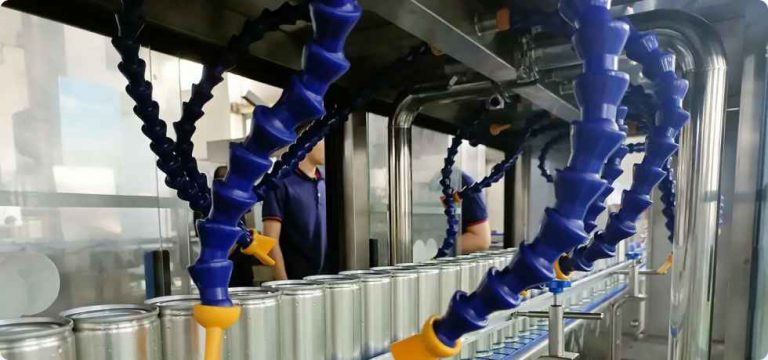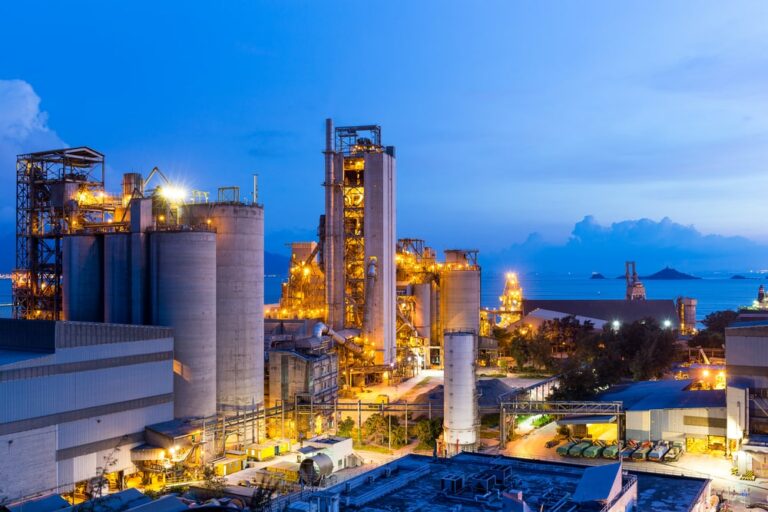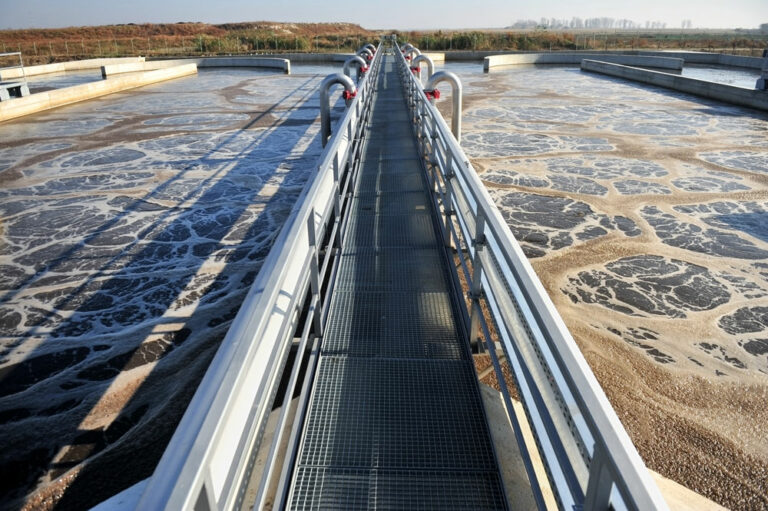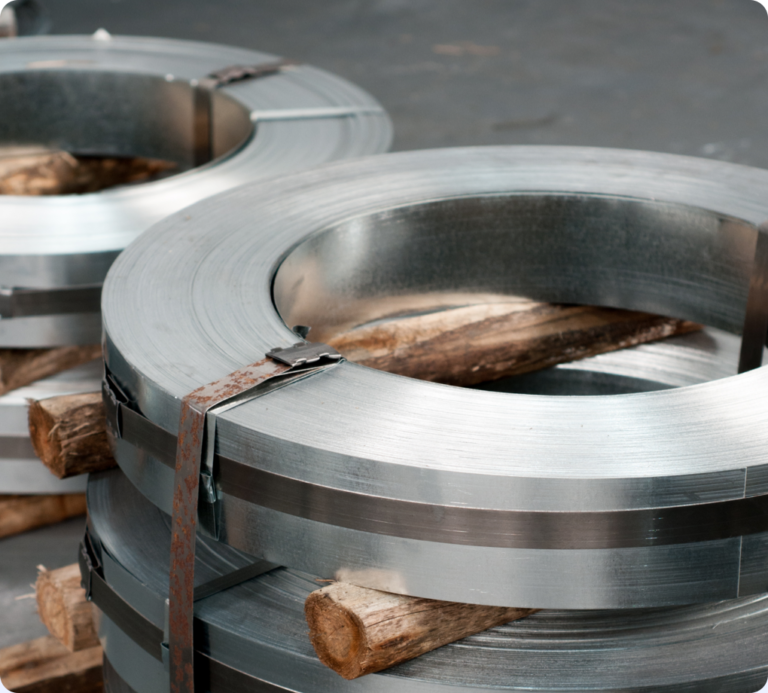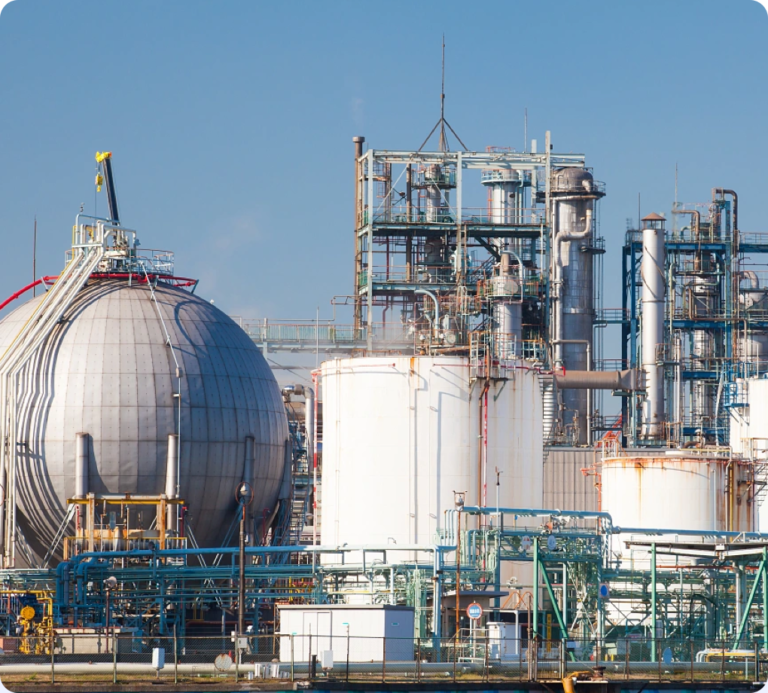Many end user is confused why the blower technology is upgraded to turbo blower? Comparing with traditional roots blower,single-stage and multistage centrifugal blower,RAETTS centrifugal air suspension blower and maglev turbo blower has simple structure:they don’t need coupling connection and oil-lubrication.The daily maintenance of turbo air blower only need to change the dust filter.The main parts of the turbo blower is including high speed permanent magnet synchronous motor(efficiency is about 97%),ternary flow impeller(Variable efficiency up to 87%),suspension bearing(air foil bearing or maglev bearing),VFD, and PLC control system.The traditional industrial air blowers normally use three-phase asynchronous motor(efficiency is about 88%),lobe impeller(efficiency is about 60%),ball bearing,belt or coupling connection.Since the air turbo blowers don’t need belt or coupling for connection,so there is not energy lost during transmission.The efficiency of the turbo blower is about 76% while the roots air blower efficiency is about 40% and multistage air blower efficiency is about 50%.The total energy saving of centrifugal turbo blower is about 25%-30%,comparing with traditional roots blower or other type centrifugal blower.
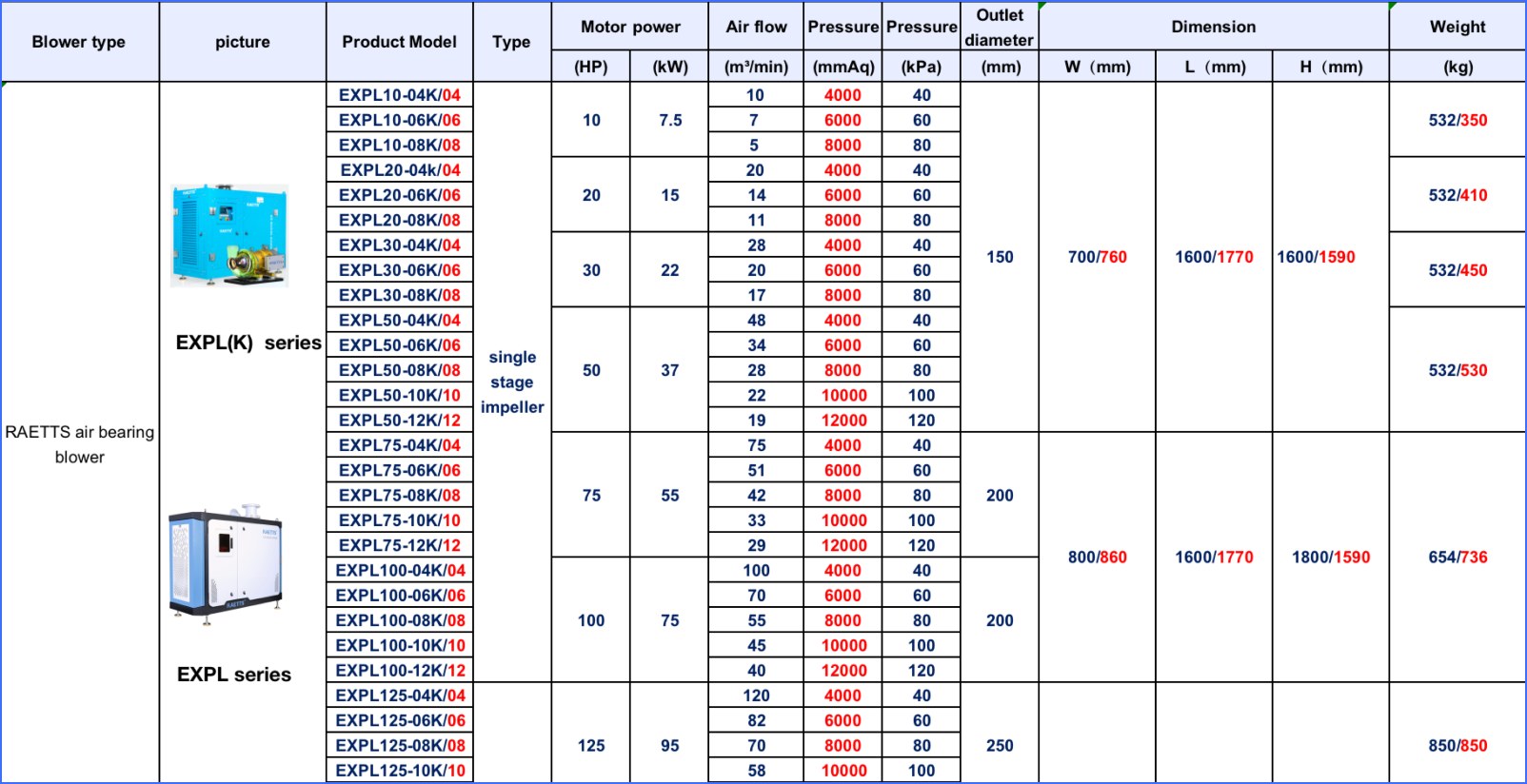
| Product name | air blower for aeration tank |
| Keyword | blower,Air Blower For Paper Mill,industrial blower for Chemical industry,air drying blower,air blower for aeration tank,Maglev Turbo Blower |
| Place of Origin | China |
| Feature | RAETTS air bearing turbo blower is a brand-new concept blower, which integrates the main core technologies such as “air suspension bearing”, “permanent magnet ultra-high-speed motor”, “high-precision aviation-grade impeller”, and creates a new era of ultra-high efficiency ,low noise and low energy consumption. |
| Dimensions | 715mm*735mm*824mm, (Contact us for specific information to confirm) |
| Applicable Industries | health products, etc. |
| Weight | 371kg |
| delivery date | the common delivery time will be 30-40 days. |
| terms of paymen | RAETTS accept payment by T/T(30% advance payment,70% before shipment) |
| Life span | 14 years (Contact us for specific information to confirm) |
| After-sale service | RAETTS warranty time for air bearing blower and maglev turbo blower is 24months,for high speed centrifugal blower is 12 months. |
| Advantage | We keep good quality and competitive price to ensure our customers benefit |
| Packing | 803x875x857mm(Contact us for specific information to confirm) |
| OEM/ODM | Customization Service Provided |
| Sales country | All over the world for example:Algeria,Coral Sea Islands,Juan de Nova Island,United Arab Emirates,Timor-Leste,Greenland,Saint Vincent and the Grenadines,Burma,Papua New Guinea |
| MOQ | 2pcs(Contact us for specific information to confirm) |
| production capacity | production capacity RAETTS production quantity for air bearing blower and maglev turbo blower is about 200pcs/month,for high speed centrifugal blower is about 700pcs/month. |
| raw materials | RAETTS air blower impeller in made of aluminum alloy,enclosure material is carbon steel,rotor material is cast iron.If customers need other special materials,we can also customized according to customers requirements |
| technology | RAETTS air bearing blower technology is originated from South Korea and maglev turbo blower technology is originated from Germany.RAETTS also have R&D team from Xi’an Jiaotong University |
| quality system | RAETTS has quality management system certificate ISO9001:2015 and enviromental management system certificate ISO14001:2015 |

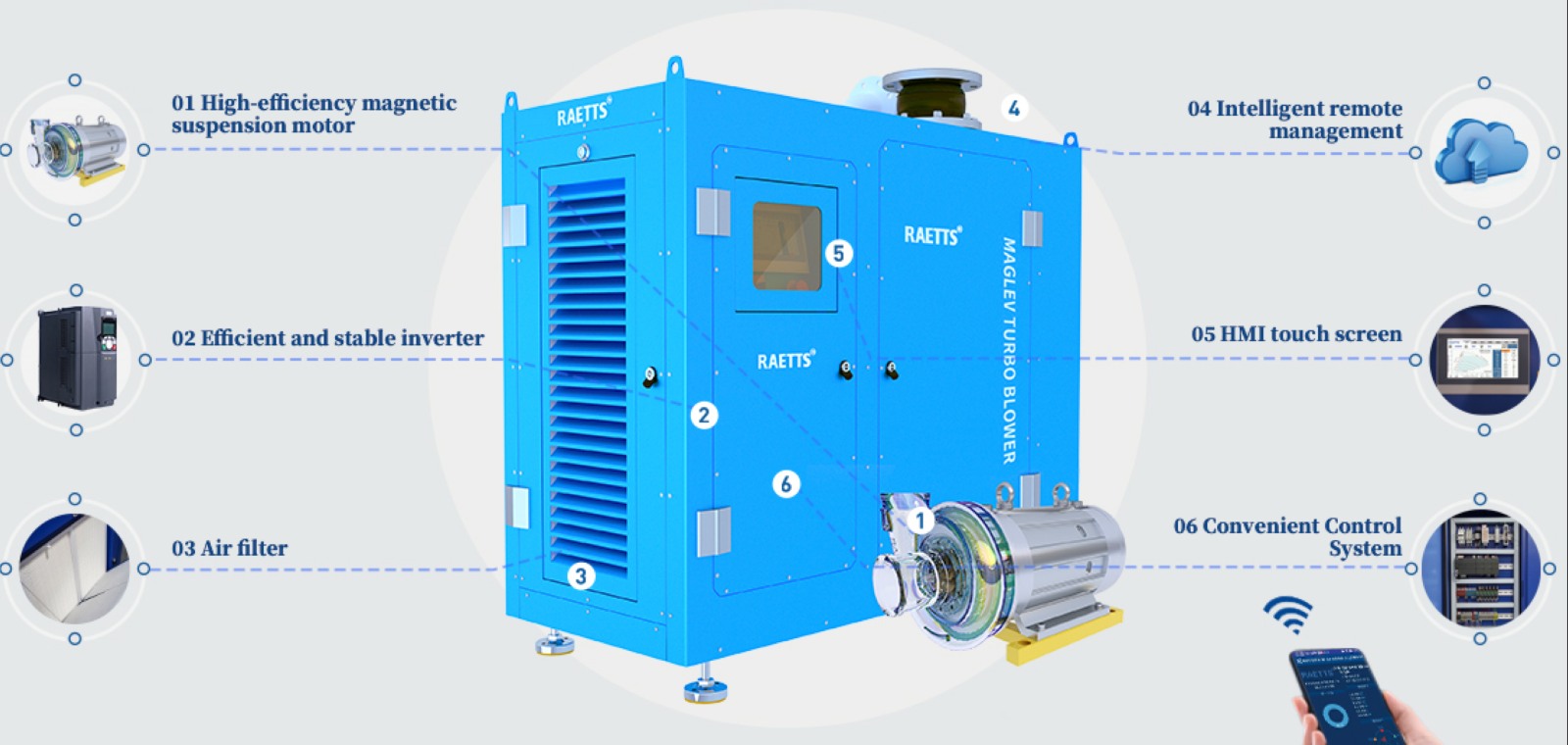
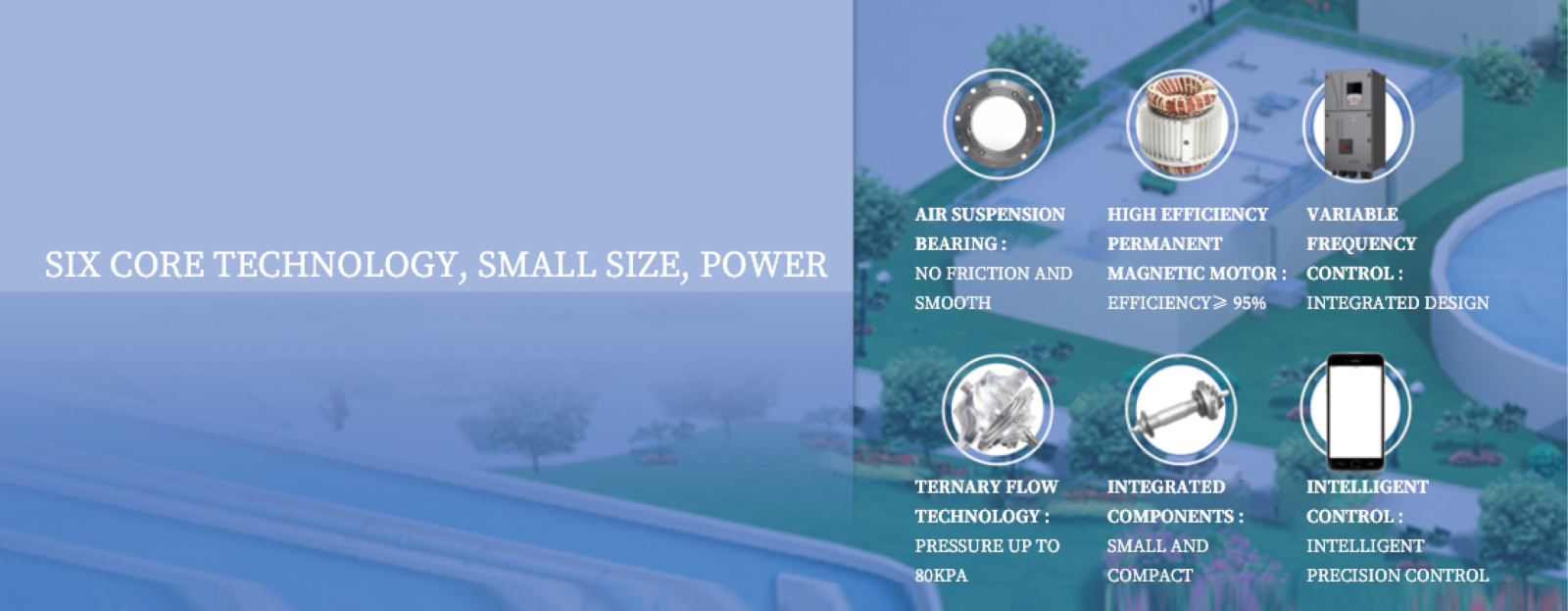
air blower for aeration tank services FAQs Guide
Are you looking for a quick review guide about air blower for aeration tankservices?
An ultimate FAQ buying guide is available to help you.This guide contains all the information about all the important facts, figures, and various processes regarding air blower for aeration tank services.
Let’s continue!
2.How Does a Turbo Blower Compare to Traditional Centrifugal Blowers?
3.What Are the Advantages of Choosing a High-Speed Turbo Blower?
4.About air blower for aeration tank raw material procurement system
5.What is the Overall Efficiency Rating of a Turbo Blower?
6.What Types of Materials Can a Turbo Blower Handle?
7.What are the maintenance requirements for an air blower for aeration tank?
8.What is a Turbo Blower and How Does it Work?
9.About air blower for aeration tank air blower origin
10.About air blower for aeration tank delivery date
11.How to choose the right air blower for aeration tank for your specific needs?
12.How Does a Turbo Blower Handle Varying Inlet Conditions?
13.Are There Customizable Options Available for Turbo Blowers?
14.About air blower for aeration tank payment method
15.What Safety Features Should I Look for in a Turbo Blower?
1.How Does a Variable Speed Drive Affect a Turbo Blower’s Performance?
We focus on innovation and continuous improvement to maintain a competitive advantage.
A variable speed drive (VSD) can have a significant impact on a turbo blower’s performance. Here are some ways in which a VSD can affect a turbo blower:
1. Energy Efficiency: One of the main benefits of using a VSD with a turbo blower is improved energy efficiency. By adjusting the speed of the blower to match the required air flow, a VSD can reduce the amount of energy consumed by the blower. This is because the blower does not have to run at full speed all the time, which can result in significant energy savings.
2. Improved Control: A VSD allows for precise control over the speed of the blower, which in turn allows for better control over the air flow. This is especially useful in applications where the air flow requirements vary, as the blower can be adjusted to meet the changing demands.
3. Reduced Wear and Tear: Running a turbo blower at full speed all the time can put a lot of strain on the equipment, leading to increased wear and tear. By using a VSD, the blower can be operated at lower speeds when the demand is lower, reducing the strain on the equipment and extending its lifespan.
4. Noise Reduction: Turbo blowers can be quite noisy when running at full speed. By using a VSD to adjust the speed of the blower, the noise level can be reduced significantly. This is especially beneficial in applications where noise levels need to be kept to a minimum.
5. Improved Process Control: In some applications, the air flow requirements may need to be adjusted constantly to maintain a specific process condition. A VSD allows for precise control over the air flow, making it easier to maintain the desired process conditions.
In summary, a variable speed drive can have a positive impact on a turbo blower’s performance by improving energy efficiency, control, reducing wear and tear, noise levels, and improving process control. It is a valuable tool for optimizing the performance of a turbo blower in various applications.
2.How Does a Turbo Blower Compare to Traditional Centrifugal Blowers?
We pay attention to the introduction and training of talents, scientifically regulate the management system, and focus on cultural construction and team cohesion.
A turbo blower is a type of centrifugal blower that uses a high-speed impeller to generate air flow. It differs from traditional centrifugal blowers in several ways:
1. Design: Turbo blowers have a more compact and streamlined design compared to traditional centrifugal blowers. This is because they use a single-stage impeller, which eliminates the need for multiple stages and reduces the overall size of the blower.
2. Speed: Turbo blowers operate at much higher speeds than traditional centrifugal blowers. While traditional blowers typically operate at speeds of 3,600 RPM or lower, turbo blowers can reach speeds of up to 30,000 RPM. This allows them to generate higher air flow rates and pressures.
3. Efficiency: Due to their high speeds, turbo blowers are more efficient than traditional centrifugal blowers. They require less energy to operate and can achieve higher air flow rates with the same power input.
4. Maintenance: Turbo blowers have fewer moving parts compared to traditional centrifugal blowers, which means they require less maintenance and have a longer lifespan.
5. Noise: Turbo blowers are generally quieter than traditional centrifugal blowers due to their streamlined design and high-speed operation.
6. Control: Turbo blowers offer more precise control over air flow and pressure compared to traditional centrifugal blowers. This is because they can adjust their speed and impeller angle to meet specific process requirements.
Overall, turbo blowers offer several advantages over traditional centrifugal blowers, including higher efficiency, lower maintenance, and more precise control. However, they may also come at a higher initial cost. The choice between the two types of blowers will depend on the specific needs and requirements of the application.
3.What Are the Advantages of Choosing a High-Speed Turbo Blower?
We have the leading technology and innovation capabilities, and attach importance to employee training and development, and provide promotion opportunities.
1. Energy Efficiency: High-speed turbo blowers are designed to operate at high speeds, which results in higher energy efficiency compared to traditional blowers. This means lower energy consumption and cost savings for the user.
2. Compact Size: High-speed turbo blowers are smaller in size compared to traditional blowers, making them ideal for applications where space is limited. This also makes them easier to install and maintain.
3. Low Noise Levels: High-speed turbo blowers operate at a much lower noise level compared to traditional blowers, making them suitable for use in noise-sensitive environments.
4. Low Maintenance: High-speed turbo blowers have fewer moving parts compared to traditional blowers, resulting in lower maintenance requirements and costs.
5. Wide Operating Range: High-speed turbo blowers have a wide operating range, allowing them to maintain a consistent flow and pressure even when there are fluctuations in demand.
6. Durability: High-speed turbo blowers are designed to be highly durable and have a longer lifespan compared to traditional blowers, resulting in lower replacement and maintenance costs.
7. Flexibility: High-speed turbo blowers can be used for a variety of applications, including aeration, ventilation, and pneumatic conveying, making them a versatile choice for different industries.
8. Environmentally Friendly: High-speed turbo blowers are designed to be environmentally friendly, with lower emissions and energy consumption compared to traditional blowers.
9. Faster Start-Up Time: High-speed turbo blowers have a faster start-up time compared to traditional blowers, allowing for quicker response to changes in demand.
10. Advanced Control Options: High-speed turbo blowers come with advanced control options, such as variable frequency drives, allowing for precise control of air flow and pressure. This results in better process control and energy savings.
4.About air blower for aeration tank raw material procurement system
RAETTS uses ERP management system to manage the suppliers and follow the raw materials production state.
5.What is the Overall Efficiency Rating of a Turbo Blower?
We are a new air blower for aeration tank manufacturer.
The overall efficiency rating of a turbo blower can vary depending on the specific model and manufacturer. However, on average, turbo blowers have an overall efficiency rating of around 70-80%. This means that for every 100 units of energy input, the turbo blower can produce 70-80 units of output energy. Factors such as design, size, and operating conditions can also affect the efficiency of a turbo blower.
6.What Types of Materials Can a Turbo Blower Handle?
We focus on teamwork and communication to achieve common goals, We attach great importance to this detail.
Turbo blowers are versatile machines that can handle a wide range of materials. Some of the most common materials that can be handled by a turbo blower include:
1. Air and gases: Turbo blowers are primarily used for moving air and gases in various industrial processes. They can handle a wide range of gases, including air, nitrogen, oxygen, and other inert gases.
2. Liquids: Turbo blowers can also handle liquids, such as water, oil, and other fluids. They are commonly used in wastewater treatment plants to aerate and mix liquids.
3. Solids: Turbo blowers can handle solid materials in the form of dust, powders, and granules. They are often used in pneumatic conveying systems to transport solid materials in industries such as food processing, pharmaceuticals, and chemical manufacturing.
4. Vapors: Turbo blowers can handle vapors and fumes from various industrial processes. They are commonly used in ventilation systems to remove harmful vapors and maintain a safe working environment.
5. Particulates: Turbo blowers can handle particulate matter, such as dust, dirt, and debris. They are often used in industrial cleaning applications to remove debris and maintain a clean working environment.
6. Fibrous materials: Turbo blowers can handle fibrous materials, such as paper, textiles, and wood fibers. They are commonly used in paper mills and textile factories to move and process these materials.
7. Corrosive materials: Turbo blowers can handle corrosive materials, such as acids and chemicals. They are often made from corrosion-resistant materials to withstand exposure to these substances.
It is important to note that the specific materials a turbo blower can handle may vary depending on its design and construction. It is always best to consult the manufacturer or a technical expert to determine if a turbo blower is suitable for a specific material.
7.What are the maintenance requirements for an air blower for aeration tank?
Different types of air blowers have different maintenance requirements,for traditional roots blower,end users need to add oil for lubrication,replace the ball bearing and change the air inlet filter periodically.But for turbo blower,the maintenance is quite easy and convenient,end users only need to change the air inlet filters 1-3 months.
8.What is a Turbo Blower and How Does it Work?
We enjoy high authority and influence in the industry and continue to innovate products and service models.
A turbo blower is a type of centrifugal blower that uses a high-speed impeller to move air or gas through a system. It is commonly used in industrial and commercial applications for ventilation, aeration, and pneumatic conveying.
The basic principle of a turbo blower is similar to that of a centrifugal fan. The impeller, which is a rotating wheel with curved blades, draws air in through the center and then accelerates it outward. This creates a high-velocity stream of air that is then directed through a diffuser, which converts the kinetic energy into pressure energy. The pressurized air is then discharged through an outlet.
The main difference between a turbo blower and a centrifugal fan is the speed at which the impeller rotates. A turbo blower typically operates at much higher speeds, often in the range of 15,000 to 50,000 revolutions per minute (RPM). This high speed is achieved through the use of a direct-drive motor or a gear system.
The high speed of the impeller allows for a more compact design and higher efficiency compared to traditional centrifugal fans. It also results in a more uniform flow of air, which is important for applications such as aeration and pneumatic conveying.
In addition to the impeller speed, the design of the blades also plays a crucial role in the performance of a turbo blower. The blades are typically curved and angled to efficiently capture and accelerate the air. They may also be adjustable to allow for fine-tuning of the air flow and pressure.
Some turbo blowers also incorporate variable frequency drives (VFDs) to control the speed of the impeller and adjust the air flow and pressure as needed. This allows for more precise control and energy savings.
Overall, turbo blowers are a highly efficient and versatile option for moving air and gas in various industrial and commercial applications. They offer a compact design, high speed, and precise control, making them a popular choice for many industries.
9.About air blower for aeration tank air blower origin
RAETTS air blower is made in China and made in Germany,we have factory both in China and Germany.
10.About air blower for aeration tank delivery date
For the regular model air blowers(air suspension blower and maglev turbo blower) which RAETTS is producing,the common delivery time will be 30-40 days.For Super air blower and EXPLORER series high speed centrifugal air blower,delivery date is about 10 days.For some other R&D products,RAETTS delivery data is about 3-4 months.
11.How to choose the right air blower for aeration tank for your specific needs?
General speaking,we will do model selection of air blower according to customer’s required air flow,air pressure,application,installation altitude,suction media.
12.How Does a Turbo Blower Handle Varying Inlet Conditions?
We maintain a certain amount of R&D investment every year and continuously improve operational efficiency to provide better services to our cooperative customers.
A turbo blower is designed to handle varying inlet conditions by adjusting its speed and flow rate to maintain a constant pressure at the outlet. This is achieved through the use of a variable frequency drive (VFD) which controls the speed of the blower motor.
When the inlet conditions change, such as an increase or decrease in air flow or pressure, the VFD will adjust the speed of the blower to maintain a constant pressure at the outlet. This is done by monitoring the pressure at the outlet and adjusting the speed of the blower accordingly.
In addition, turbo blowers are equipped with inlet guide vanes (IGVs) which can be adjusted to control the amount of air entering the blower. This allows the blower to handle varying inlet conditions without overloading the motor or causing damage to the blower.
Furthermore, some turbo blowers are equipped with advanced control systems that can automatically adjust the speed and flow rate based on the inlet conditions, ensuring optimal performance and energy efficiency.
Overall, a turbo blower is able to handle varying inlet conditions by continuously adjusting its speed and flow rate to maintain a constant pressure at the outlet, while also utilizing inlet guide vanes and advanced control systems for optimal performance.
13.Are There Customizable Options Available for Turbo Blowers?
Being one of the top air blower for aeration tank manufacturers in China, We attach great importance to this detail.
Yes, there are customizable options available for turbo blowers. Some of the common customizable options include:
1. Motor Size: The motor size can be customized to meet specific power requirements and operating conditions.
2. Impeller Size and Design: The impeller size and design can be customized to achieve the desired flow rate and pressure.
3. Material of Construction: The material of construction can be customized to suit the application and environment. For example, stainless steel or corrosion-resistant coatings can be used for applications in corrosive environments.
4. Inlet and Outlet Configurations: The inlet and outlet configurations can be customized to fit the existing piping system or to optimize the flow pattern.
5. Control System: The control system can be customized to include features such as variable speed drives, remote monitoring, and automation.
6. Sound Attenuation: Sound attenuation options can be added to reduce the noise level of the turbo blower.
7. Mounting Options: The mounting options can be customized to fit the available space and installation requirements.
8. Accessories: Various accessories such as filters, silencers, and dampers can be added to the turbo blower to enhance its performance and efficiency.
It is important to consult with the manufacturer or supplier to discuss the specific customization options available for a particular turbo blower model.
14.About air blower for aeration tank payment method
RAETTS accept payment by T/T(30% advance payment,70% before shipment)
15.What Safety Features Should I Look for in a Turbo Blower?
As one of the top air blower for aeration tank manufacturers in China, we take this very seriously.
1. Overload Protection: This feature automatically shuts off the blower if it becomes overloaded, preventing damage to the motor and other components.
2. Thermal Protection: This feature monitors the temperature of the blower and shuts it off if it becomes too hot, preventing overheating and potential fire hazards.
3. Ground Fault Circuit Interrupter (GFCI): A GFCI is a safety device that shuts off the power to the blower if it detects a ground fault or electrical leak, preventing electric shock.
4. Lockout/Tagout Capability: This feature allows the blower to be locked out and tagged out during maintenance or repair, preventing accidental start-up and ensuring the safety of maintenance workers.
5. Low Noise Level: Look for a turbo blower with a low noise level to protect your hearing and reduce noise pollution in the surrounding area.
6. Vibration Isolation: This feature reduces the vibration of the blower, making it safer to operate and reducing the risk of damage to surrounding structures.
7. Safety Guards: Some turbo blowers come with safety guards to prevent accidental contact with moving parts, reducing the risk of injury.
8. Emergency Stop Button: An emergency stop button allows for quick and easy shut-off in case of an emergency or malfunction.
9. Anti-Slip Feet: Look for a blower with anti-slip feet to prevent it from moving or tipping over during operation, ensuring the safety of the operator.
10. UL or CSA Certification: Make sure the turbo blower has been certified by a reputable organization such as UL (Underwriters Laboratories) or CSA (Canadian Standards Association) to ensure it meets safety standards.
Tag:high-speed turbo blower manufacturers,Turbo Blowers for Paper & Pulp,air blower for Chemical industry,Turbo Blowers for Wastewater Treatment,turbo blower manufacturers,magnetic levitation blower

